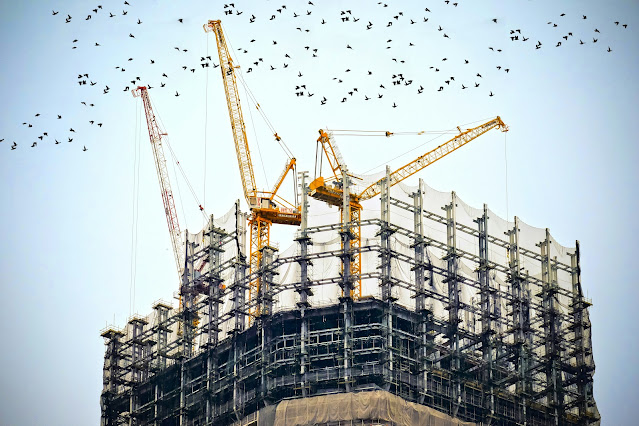In the world of construction, where towering skyscrapers and intricate infrastructures are born, understanding regulatory compliance is essential. Compliance is not just a box to check; it's a blueprint that ensures safety, quality, and legality. This post dives into the core of regulatory compliance within construction projects, offering insights that are crucial for anyone involved in the field.
Regulatory compliance in construction is more than just following rules. It ensures that projects meet safety standards, legal requirements, and environmental guidelines. Ignoring these regulations can lead to costly fines, legal issues, and even project shutdowns. For construction professionals, understanding compliance is akin to mastering the language of their craft.
Safety Standards and Their Role
Safety standards are at the heart of construction compliance. They protect workers, the public, and the environment. From wearing the right gear to following proper procedures, safety standards prevent accidents and save lives. Organizations like OSHA provide guidelines that every construction site must adhere to, highlighting the importance of compliance in ensuring a secure working environment.
Environmental Regulations You Must Know
Environmental regulations play a pivotal role in construction projects. These rules ensure that projects do not harm the environment, covering areas like waste disposal, emissions, and habitat conservation. For instance, understanding the nuances of SWPPP in Utah helps manage stormwater pollution, protecting local ecosystems. By adhering to these regulations, construction companies can contribute to sustainability while avoiding legal troubles.
Navigating Building Codes
Building codes are the foundation of construction compliance. They dictate the structural integrity, fire safety, and accessibility of buildings. Each region has its own set of codes that must be followed. Understanding these codes ensures that projects are not only safe but also meet legal requirements. Compliance with building codes is crucial for obtaining permits and approvals, making it a non-negotiable aspect of any construction project.
The Role of Permits and Approvals
Permits and approvals are the gatekeepers of construction projects. They signify that a project meets all regulatory requirements. Obtaining these permits involves submitting detailed plans, undergoing inspections, and sometimes, public consultations. Navigating this process requires a deep understanding of local regulations and a proactive approach to compliance.
Quality Assurance and Control Measures
Quality assurance and control are integral to regulatory compliance. They involve systematic processes to ensure that every aspect of a construction project meets predetermined standards. From material selection to construction techniques, quality control measures prevent defects and guarantee the longevity of a project. Adhering to these measures is essential for maintaining compliance and achieving excellence.
Managing Risks and Liabilities
Construction projects come with inherent risks and liabilities. Regulatory compliance helps mitigate these by ensuring that projects adhere to safety and legal standards. From insurance requirements to liability waivers, understanding the legal landscape is crucial. Proper risk management not only protects the company but also ensures the safety of all stakeholders involved.
The Impact of Non-Compliance
Ignoring regulatory compliance can have severe consequences. Fines, lawsuits, and reputational damage can cripple a construction company. Non-compliance can also lead to project delays and increased costs. Understanding the potential impact of non-compliance underscores the importance of adhering to regulations and highlights the need for continuous education and awareness.
Technology's Role in Ensuring Compliance
Technology is revolutionizing the way construction companies achieve compliance. From software solutions that track permit statuses to drones that monitor construction progress, technology streamlines compliance processes. By leveraging these tools, companies can ensure that they meet all regulatory requirements efficiently and effectively.
Continuous Education and Training
In the dynamic world of construction, regulations are constantly evolving. Continuous education and training are essential for staying up-to-date with the latest compliance requirements. Workshops, seminars, and certifications help professionals enhance their knowledge, ensuring that they are well-equipped to handle any regulatory challenges that arise.
Cultivating a Compliance Culture
Fostering a culture of compliance within a construction company is crucial for long-term success. This involves instilling a sense of responsibility and accountability among employees at all levels. By prioritizing compliance, companies can ensure that regulations are not only met but exceeded, setting a benchmark for excellence in the industry.
Building Strong Relationships with Regulators
Building strong relationships with regulators can significantly ease the compliance process. Open communication and collaboration with regulatory bodies can lead to smoother inspections and quicker approvals. By fostering a positive rapport with regulators, construction companies can ensure that they are always one step ahead in meeting compliance requirements.
Conclusion
Understanding regulatory compliance in construction projects is a multifaceted endeavor. It requires knowledge, vigilance, and a proactive approach. By prioritizing compliance, construction professionals can ensure that their projects are safe, legal, and successful. For those eager to explore this further and gain a competitive edge, additional resources and expert consultations can provide valuable insights and guidance.


